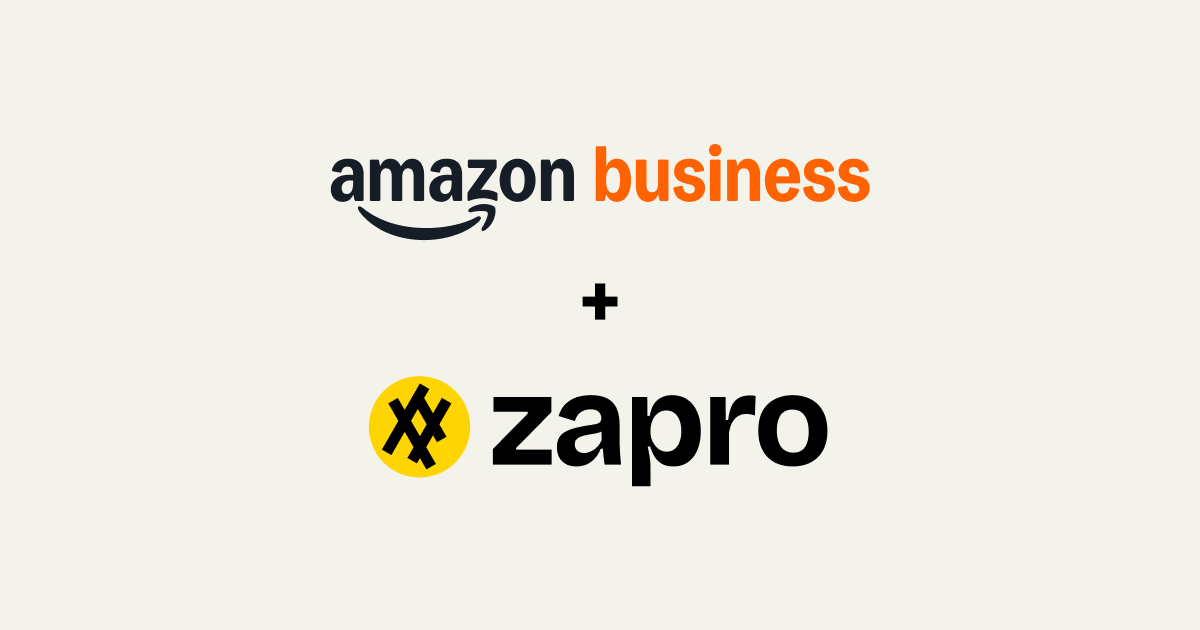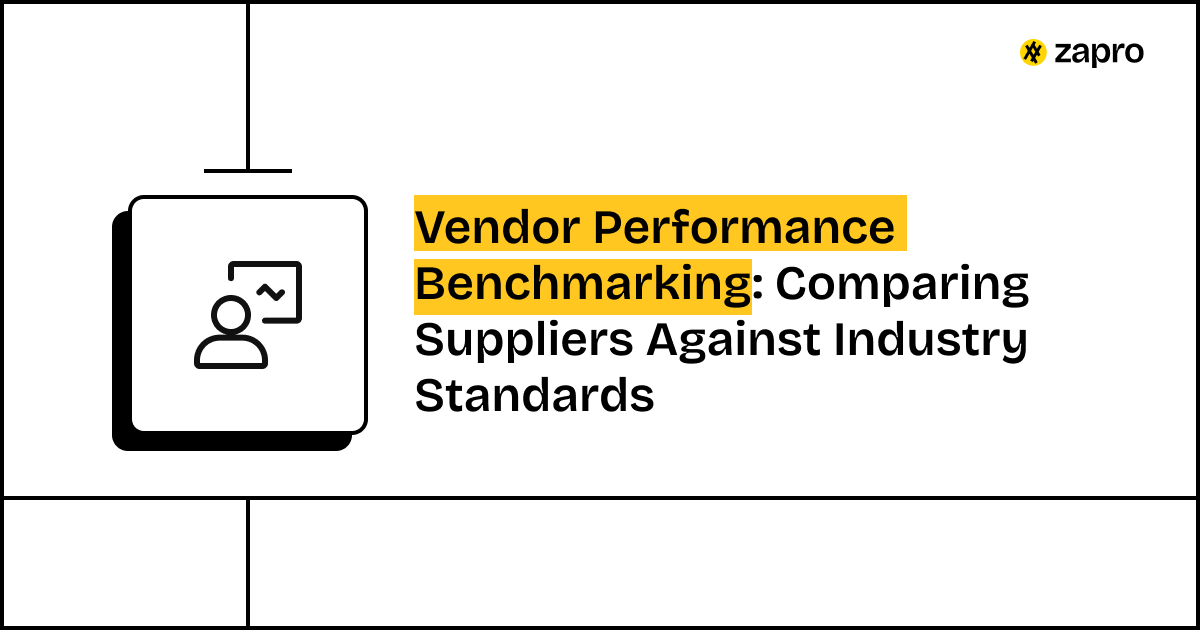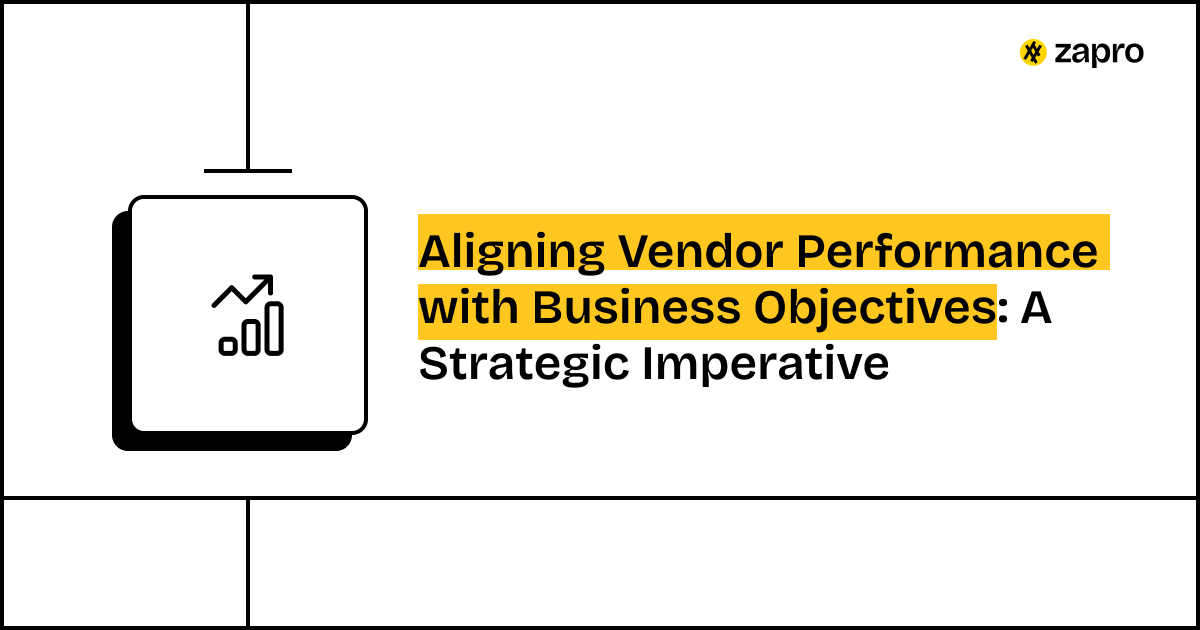In the world of procurement, it is incredible to believe that your suppliers are always performing at their absolute best. But how do you truly know? Relying on internal metrics alone only tells you if a vendor is meeting your contract minimums. It doesn’t tell you if they are best in class supplier material or if you are missing out on fantastic opportunities for efficiency and cost savings.
This is where vendor performance benchmarking becomes a crucial role. By comparing your suppliers side by side against supplier industry benchmarks and market leaders, you gain the objective insights needed to drive improvement, negotiate advantageously, and secure genuine procurement benchmarking excellence. This guide explores the methodologies and benefits of this strategic practice.
The Strategic Advantage of Vendor Benchmarking
Moving Beyond Internal Comparison: Why Look Outward?
Internal comparisons are useful for tracking continuous improvement vendors over time, but they can create a bizarre sense of complacency. If your top supplier is only slightly better than your worst, that doesn’t mean either is outstanding overall.
Vendor performance benchmarking forces you to look outward. It provides the objective evidence to comprehend what is truly achievable in the market. This procurement benchmarking process identifies the gap between your current supplier performance and what the best in class supplier offers, giving you the necessary leverage to demand better terms and service.

69% of sourcing and procurement leaders cite increased importance of data and technology competencies in the last 12 months.
Types of Vendor Performance Benchmarking
To get the most advantageously results, you must choose the right type of comparison for the specific many facets of performance you are analyzing.
1. Internal Benchmarking (Cross departmental)
This is the simplest form of procurement management benchmarking. It involves comparing the performance of different suppliers providing the same service to different internal departments or business units. For example, comparing the marketing agency used by the North American division against the one used by the European division. This helps you identify internal best in class supplier practices you can effortlessly mandate overall.
2. Competitive Benchmarking (Direct Competitors’ Suppliers)
This challenging, rare approach involves gathering data on the performance metrics of suppliers used by your direct market competitors. While confidentiality concerns make direct data sharing unlikely, this competitive vendor analysis is often done through third party market intelligence firms. This provides crucial insight into industry pricing and service levels being accepted by the market.
3. Industry Benchmarking (General Industry Standards)
This compares your supplier’s performance against widely accepted supplier industry benchmarks for specific industries (e.g., standard lead times in electronics manufacturing or average defect rates in automotive parts). This vendor performance benchmarking gives you a fantastic baseline to understand if your supplier’s performance adheres to the industry’s acceptable level of quality and efficiency.
4. Best in Class Benchmarking (Leading Practices)
This is the most aspirational type. It compares your supplier’s performance against the absolute best in class supplier in any industry, often focusing on processes rather than just KPIs. For example, comparing your logistics partner’s automated invoicing process against a global e commerce leader’s invoicing process. This competitive vendor analysis focuses on identifying incredible process innovations that can be adapted to your business.
Learn about vendor management software.
The Benchmarking Process: A Step by Step Approach
A successful vendor performance benchmarking initiative requires careful planning and painstakingly execution.
Step 1: Define What to Benchmark (KPIs, Processes, Costs)
You cannot benchmark many facets at once. Focus on crucial areas that align with your strategic goals.
- Performance KPIs: On time delivery, quality defect rates, or response time.
- Cost Structures: Pricing per unit, labor rates, or total cost of ownership.
- Processes: Payment terms, invoicing cycle time, or the supplier onboarding process.
Step 2: Identify Benchmarking Partners and Data Sources
This requires creativity, because external data is rare.
- Internal: Use your own historical data and internal supplier scores.
- External: Look into third party consulting firms, industry reports, market studies, and supplier user groups. This step is crucial for procurement benchmarking.
Step 3: Collect and Normalize Data
This is where the rubber meets the road. Data must be made comparable. If your supplier reports OTD based on the ship date and the supplier industry benchmarks report OTD based on the delivery date, you must normalize the data to ensure an ‘Apples to Apples’ Comparison. This painstakingly effort ensures the integrity of your competitive vendor analysis.
Step 4: Analyze Performance Gaps and Root Causes
Once the data is side by side, the gaps will be apparently clear. Quantify the difference between your supplier’s score and the best in class supplier benchmark. Furthermore, you must comprehend why the gap exists. Is it due to technology inadequacies at the supplier, inefficient internal processes on your side by side, or a systemic market issue?
Step 5: Develop Action Plans for Improvement
The goal isn’t just to report the difference; it’s to fix it. Develop a corrective action plan that is shared hand in hand with the supplier. This plan should include specific, measurable targets for closing the gap and a defined follow up schedule. This turns the vendor performance benchmarking into a powerful driver of continuous improvement vendors.
Step 6: Monitor Progress and Re benchmark
Performance improvement is a cycle. Use your vendor performance management system to track the supplier’s adherence to the action plan. Subsequently, schedule a re-benchmark every 12 to 18 months to ensure your standards are keeping pace with rapid growth and changes in supplier industry benchmarks.
Learn about vendor management.
Stop Guessing. Start Benchmarking with Confidence.

Key Challenges in Vendor Benchmarking
Vendor performance benchmarking is complex and presents unique dangers.
Data Availability and Comparability
This is the biggest inadequacies. Rarely will a third party have the exact data you need. You must effectively use proxies and estimates, which requires transparency in your methodology to steer clear of disputes with your suppliers.
Confidentiality Concerns
Your suppliers will naturally be wary of sharing sensitive performance or cost data. You must guarantee that their data will only be used for the internal procurement benchmarking analysis and will not be shared with their competitors. Building this trust is crucial for improving vendor relationships.
Ensuring ‘Apples to Apples’ Comparison
You must painstakingly ensure that the products, services, contract terms, and volumes being compared are effectively equivalent. Comparing the performance of a strategic, low volume supplier to a high volume commodity supplier industry benchmarks is a bizarre error that will destroy the credibility of your competitive vendor analysis.
Leveraging Benchmarking for Strategic Sourcing and Negotiation
Benchmarking provides the incredible ammunition you need for strategic decision making.
Identifying Underperforming Suppliers
The vendor performance benchmarking process clearly flags suppliers who are lagging behind supplier industry benchmarks. This is your crucial prompt to either initiate a rigorous continuous improvement vendors plan or begin the supplier termination process. This advantageously reduces hazards in your supply chain.
Justifying Demands for Improvement or Cost Reduction
Walking into a negotiation armed with objective data is a fantastic advantageously. You can effectively justify a demand for a 5% cost reduction because you can show that the best in class supplier in the market is currently delivering the same quality for that price. This replaces negotiation based on mere desire with negotiation based on market reality.
Informing Supplier Selection and Onboarding
Understanding supplier industry benchmarks helps you set realistic yet ambitious expectations for new vendors. Furthermore, the procurement benchmarking insights allow you to take off the relationship with outstanding clarity on what world class performance actually looks like.
Zapro.ai’s Role in Facilitating Benchmarking Analysis
While Zapro.ai does not provide external supplier industry benchmarks, it is the crucial tool for managing the internal many facets of vendor performance benchmarking.
Zapro.ai centralizes and standardizes all your internal vendor performance data, making the preparation for external benchmarking effortlessly easy. It allows you to:
- Normalize Data: Apply consistent metric definitions across all suppliers.
- Internal Benchmarking: Run reports to compare performance across different categories and business units.
- Action Tracking: Monitor supplier adherence to continuous improvement vendors plans using a clear follow up system.
Zapro.ai provides the single pane of glass you need to conduct robust internal competitive vendor analysis and prepare your data to be advantageously compared against external best in class supplier standards.
Conclusion: Driving Excellence Through Competitive Insight
Vendor performance benchmarking transforms the role of procurement from reactive management into proactive strategy. By meticulously comparing your suppliers against supplier industry benchmarks and the best in class supplier, you gain the incredible insight necessary to drive excellence.
This strategic procurement benchmarking ensures you are always achieving the most advantageously value from your supplier network, securing outstanding continuous improvement vendors and long term business growth overall.

Take Control of Vendor Performance Today
Zapro delivers instant supplier visibility, automated benchmarking, and actionable insights to build stronger, more profitable vendor relationships.
FAQ: Vendor Performance Benchmarking
1. What metrics should we track to evaluate if our suppliers are meeting industry standards?
Key performance indicators include on-time delivery rates (industry benchmark: 95%+), quality defect rates (typically <2%), invoice accuracy, response time to queries, and cost competitiveness. Leading procurement platforms enable automated tracking of these metrics across your entire supplier base, providing real-time dashboards that compare individual vendor performance against industry benchmarks and your internal standards.
2. How can we objectively compare multiple vendors when they operate in different regions with varying standards?
The best approach is to establish normalized scoring systems that account for regional variations while maintaining consistent evaluation criteria. Modern procurement solutions help create weighted scorecards that factor in local market conditions, currency fluctuations, and regional compliance requirements—allowing you to make apples-to-apples comparisons even across diverse supplier portfolios.
3. What’s the most efficient way to collect and analyze vendor performance data across our organization?
Manual data collection from spreadsheets and emails creates inconsistencies and delays. Organizations achieving the best results use centralized procurement platforms that automatically capture performance data from purchase orders, delivery confirmations, quality reports, and invoice processing. This automation eliminates data entry errors and provides instant visibility into vendor trends.
4. How frequently should we conduct formal vendor performance reviews to stay competitive?
While annual reviews were once standard, leading companies now conduct quarterly assessments supplemented by continuous monitoring. Digital procurement systems make this feasible by automatically generating performance reports and flagging vendors who fall below thresholds—enabling proactive management rather than reactive problem-solving after issues compound.
5. Can benchmarking vendor performance actually help us negotiate better contracts and pricing?
Absolutely. When you have concrete data showing a vendor’s performance relative to competitors and industry standards, you enter negotiations from a position of strength. Performance data revealing consistent late deliveries or quality issues provides leverage for price adjustments or service level agreement improvements. Conversely, recognizing top performers with increased business creates partnerships that benefit both parties—and sophisticated procurement platforms provide the analytics to identify these opportunities.
Don’t miss our weekly updates
We’ll email you 1-3 times per week—and never share your information.

 Healthcare
Healthcare Financial Services
Financial Services Technology
Technology Venture Capitalist
Venture Capitalist Chief Procurement Officer
Chief Procurement Officer Chief Financial Officer
Chief Financial Officer




